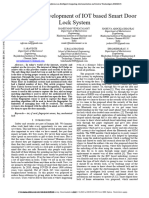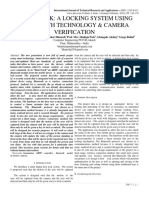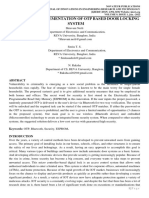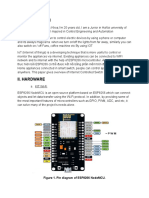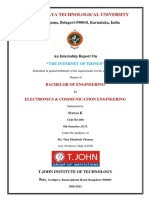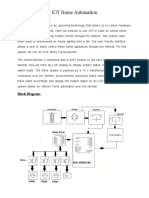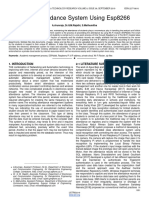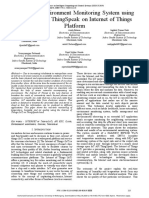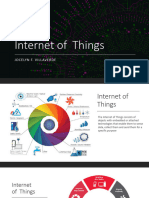0% found this document useful (0 votes)
52 views26 pagesSmart Lock Using Iot
The document outlines the design and implementation of an IoT-based smart lock system that enhances security through keypad and RFID authentication, utilizing an ESP8266 microcontroller for remote monitoring. It details the hardware components, including a servo motor for locking, and emphasizes the system's ability to provide real-time updates and alerts. Future advancements are discussed, including AI integration and energy-efficient designs, indicating a growing trend towards more secure and user-friendly access control solutions.
Uploaded by
Gokulraja GokulCopyright
© © All Rights Reserved
We take content rights seriously. If you suspect this is your content, claim it here.
Available Formats
Download as PPTX, PDF, TXT or read online on Scribd
0% found this document useful (0 votes)
52 views26 pagesSmart Lock Using Iot
The document outlines the design and implementation of an IoT-based smart lock system that enhances security through keypad and RFID authentication, utilizing an ESP8266 microcontroller for remote monitoring. It details the hardware components, including a servo motor for locking, and emphasizes the system's ability to provide real-time updates and alerts. Future advancements are discussed, including AI integration and energy-efficient designs, indicating a growing trend towards more secure and user-friendly access control solutions.
Uploaded by
Gokulraja GokulCopyright
© © All Rights Reserved
We take content rights seriously. If you suspect this is your content, claim it here.
Available Formats
Download as PPTX, PDF, TXT or read online on Scribd
/ 26



























